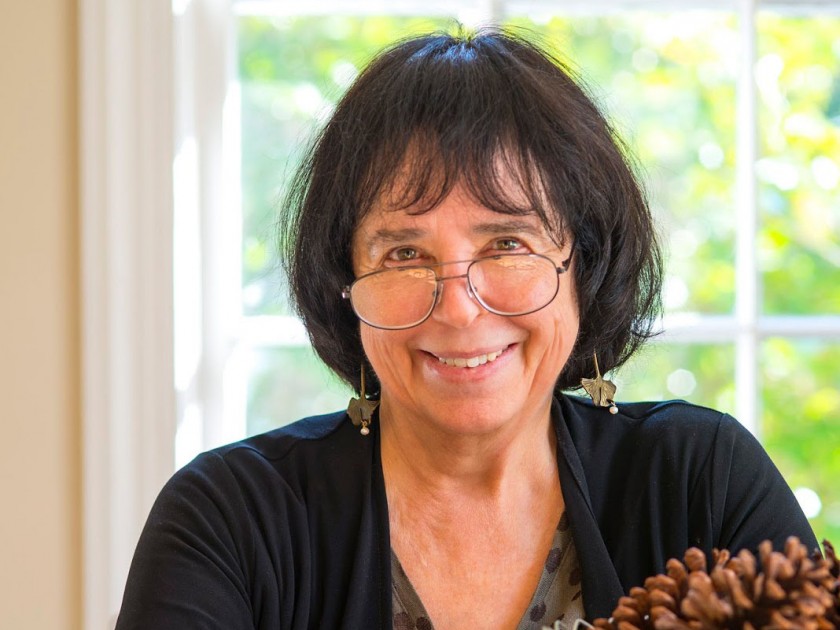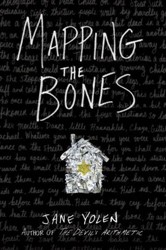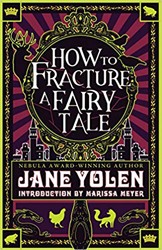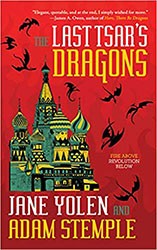
Photo credit: Jason Stemple
In the Jewish book world, I am mostly known for my Holocaust novels—Devil’s Arithmetic, Briar Rose, Mapping the Bones, and the picture book, The Stone Angel.
The PJ Library knows a bit more about me: my Golem novel B.U.G (with Adam Stemple), How Do Dinosaurs Say Happy Chanukah, Milk and Honey, Jewish Fairy Tale Feasts (with Heidi Stemple), Meet Me at the Well, (with Barbara Diamond Goldin), and others.
While my heritage is Jewish on both sides, I come from a non-religious family; we didn’t keep kosher and we didn’t celebrate Jewish holidays — unless it was a seder at Uncle Lou’s, a Purim Party at Uncle Sam and Aunt Rose’s temple, or some of my many cousins’ bar mitzvahs. We didn’t attend temple or go to Hebrew school.
As a teen, I had to plead to go to a Confirmation Class — no bat mitzvah’s on the horizon yet — just to meet other Jewish kids. I was fascinated by the stories of Jewish history and lore and wanted more. I became the first girl at the temple to read from the Torah at Confirmation (fast learner faster forgetter). This fascination probably explains in part why I was a religion minor at Smith College, which is how I have read both the Hebrew Bible and the New Testament, plus the Book of Mormon, and the Quran, among others.
Yet, while the stories within each religion enchanted me, none of them made me particularly religious. Rather I was spiritually-minded, became a folklorist manqué, and have remained so to this day. My soft spot as a writer is the place where history, poetry, and legend combine to tell a deeper truth.
My soft spot as a writer is the place where history, poetry, and legend combine to tell a deeper truth.
However, my book-writing career — which began in 1963, with women pirates, followed quickly by picture books about kings and princesses and witches, plus nonfiction about kites, bells, and disappearing islands — did not feature anyone or anything Jewish.
And then in the 1980s, one of my editors, who happened to be a rabbi’s wife, asked me why I had never written a Jewish book. And I had to think long and hard about that. And she noodged. Boy! Was she an expert noodge. The result was The Devil’s Arithmetic. And then the Jewish stories began to tumble out — between more books about women pirates and kings and princesses and unicorns and dinosaurs— in prose, in rhyme, for picture book readers and for teens.
So, it shouldn’t have surprised me that, years later when asked by an editor for a short story for a dragon anthology he was editing, that I wrote one with dragons and Jews.
Well, it wasn’t quite that easy of course. There’s a long road between an idea and a story. Longer still between all that and a novella.
At first I told the short story editor that I didn’t want to write another dragon story. Actually I said, “I am DONE with all that.” I had written more stories and poems and books about dragons than I could count, and truly believed that I had none left in me.
At first I told the short story editor that I didn’t want to write another dragon story. Actually I said, “I am DONE with all that.”
Moments after I’d sent off that email saying no, two lines came teasing into my head. “The dragons were harrowing the provinces again. They did so whenever the tsar was upset with the Jews.”
No, I don’t know why I thought such a thing. Those lines arrived fully formed. Clearly the Muse was working overtime and she — bully that she can often be — wanted me to write that story.
Now, sometimes, I hoard ideas closely; sometimes I give them away to writer friends and family. All three of my children are published writers, but only Adam, my middle child, writes fantasy almost exclusively. Often historical fantasy. Those lines had his name all over them. I did what I always do at such a moment — I sent an email to him with those two lines and a note that said, “Want to play?” And off we went.
Take a quick look at Adam’s prolific and widespread career as a writer of published novels, short stories, poetry, nonfiction, and music books. He is also a professional musician and one of his bands (there have been many) covered Boney M’s “Rah, Rah Rasputin.” He also creates websites for children’s book writers, creates book trailers (along with the music in them), and is a no-holds barred political gadfly. He has a dark sensibility, can plot like crazy, and will kill people off in his books without a bit of regret. I have problems with all of the above, so we make a great team.
We wrote the short story — it was 13,000 words. I mostly wrote the parts about the royal family and Rasputin and Adam mostly wrote about the Jews. Then we switched and edited one another’s parts. We tried to make the whole thing seamless so it didn’t sound as if had been written by two separate people. The editor loved it, gave us a contract, and published it.
But once it was published, I thought—This could be a novel. I have done that a number of times, turned a short story into a novel, or a poem into a picture book. Luckily Adam agreed. But we could find no editor who thought it could be done as a novel. That would have meant 80 – 90 thousand words, and we only had 13,000 going in.
Fast forwarding three or four years, the two of us were working on other projects. I had started doing story collections with Tachyon, a small San Francisco company I absolutely love. They have a line of fantasy novellas and I pitched Last Tsar’s Dragon to them. A novella is usually in the 35,000 word range. That meant doubling what we already had. Not just adding words, but enlarging the roles of some of the characters, adding more history; for example, I read the letters between the tsarina and the tsar that lent depth to their relationship. It also gave us a lot more room for fleshing out the Jewish portion of the book, and we were able to change the ending of the royal family. Adam got to turn the “perfect bureaucrat” into a hidden killer, which he loved.
We were both personally fondest of the Jewish characters. They were brilliant, and had moral compasses that seemed to find True North most of the time. I tried to like the royal family, but it was tough going. Tsar Nicholas was a bit stupid and limited, and terribly antisemitic. He was the tsar who supported and disseminated the “Protocols of the Elders of Zion” and used it as the excuse for his attacks on the Jews. And while the tsarina (a great granddaughter of Queen Victoria) was smarter and more caring, she was also an antisemite and so, hard to love.
Right now Adam is off chasing zombies and magical samurai. I have taken a turn towards poetry and talking fish.
The novella came in at about 37,000 words. And we are very pleased with it. But I think the editors who turned it down as a novel were right. By the time we finished the novella, we were both done with dragons.
For the moment.
Right now Adam is off chasing zombies and magical samurai. I have taken a turn towards poetry and talking fish.
But if the Muse comes calling, my door is always open, and I have a pantry full of exotic teas.
Jane Yolen lives in Massachusetts and has written more than 300 books across all genres and age ranges. She has been called the Hans Christian Andersen of America and the Aesop of the twentieth century.



